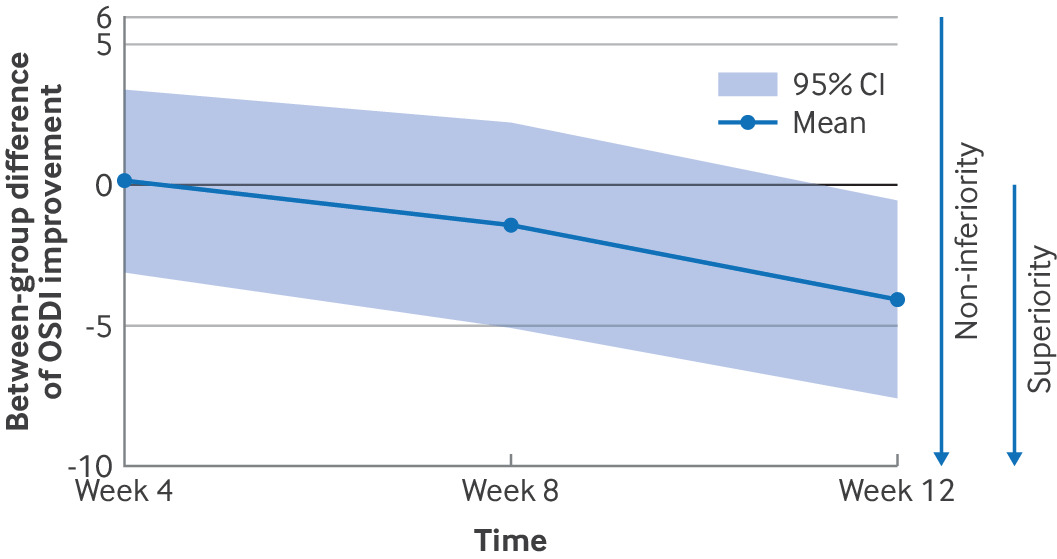Anecdotal claims are that laughter therapy alleviates depression, anxiety, stress, and chronic pain, while strengthening immune function but if you have clinical depression, please don't limit yourself to people saying you need to smile more and get scientific help. Laughter therapy for dry eye disease is a much less risky proposition.
Scholars in China and the UK had 283 participants aged 18-45 years (average age 29; 74% female) who were assessed for dry eye disease using the ocular surface disease index (OSDI) score and randomly assigned to receive laughter exercise or 0.1% sodium hyaluronic acid eye drops four times a day for eight weeks. Participants with existing eye conditions, injury, infection or allergy, and those who had recently used contact lenses or any dry eye disease treatment were excluded.

The non-inferiority comparison between laughter exercise group and 0.1% sodium hyaluronic acid group. The upper bound of the 95% confidence interval (CI) −5.08 to 2.19 at eight weeks was less than the non-inferiority margin which had been prespecified as 6, indicating that laughter exercise was not inferior to 0.1% sodium hyaluronic acid at the primary end point, and tended to be converted to superiority at 12 weeks with the whole 95% CI below the zero line (−7.62 to −0.55). OSDI=ocular surface disease index
The laughter exercise group watched an instructional video and were asked to vocalise and repeat the phrases “Hee hee hee, hah hah hah, cheese cheese cheese, cheek cheek cheek, hah hah hah hah hah hah” 30 times per five minute session using a face recognition mobile app to standardise the exercise and enhance facial movements.
The eye drop (control) group applied 0.1% sodium hyaluronic acid eye drops to both eyes four times a day for eight weeks, tracking their usage frequency via the same app. Both treatments were stopped at eight weeks and any change in eye surface discomfort scores were measured at weeks 10 and 12.
The average OSDI score at eight weeks was 10.5 points lower (indicating less discomfort) in the laughter exercise group and 8.83 lower in the control group, with a mean difference of −1.45 points, suggesting that laughter exercise was no less effective than eye drops.
Laughter exercise also showed significant improvements in non-invasive tear break up time (time taken for the first dry spot to appear on the cornea after a blink), meibomian gland function (oil glands that help prevent tears from evaporating too quickly), and mental health scores. No adverse events were noted in either study group.





Comments